Physical Address
304 North Cardinal St.
Dorchester Center, MA 02124
Entrapment neuropathy of the ulnar nerve at the wrist is known as ulnar tunnel syndrome and is the much less common than carpal tunnel syndrome ( Fig. 94.1 ). The clinical presentation of ulnar tunnel syndrome is dependent on what point at which the motor and sensory branches of the ulnar nerve are compromised ( Fig. 94.2 ). If the ulnar nerve is compromised in the proximal portion of the canal before the bifurcation of the motor and sensory components of the nerve, the patient will experience both motor and sensory symptomatology as well as pain and dysesthesias with associated numbness that radiates into the ulnar aspect of the palm and dorsum of the hand and the little finger and the ulnar half of the ring finger and paralysis of the intrinsic muscles of the hand (see Fig. 94.2 ). These symptoms may also radiate proximal to the level of nerve entrapment into the distal forearm. If only the deep palmar motor branch of the ulnar nerve as it passes through the Guyon canal, a pure motor neuropathy results. It manifests as painless paralysis of the intrinsic muscles of the hand (see Fig. 94.2 ). If only the more distal superficial branch of the ulnar nerve is compressed, a pure sensory neuropathy will result (see Fig. 94.2 ).
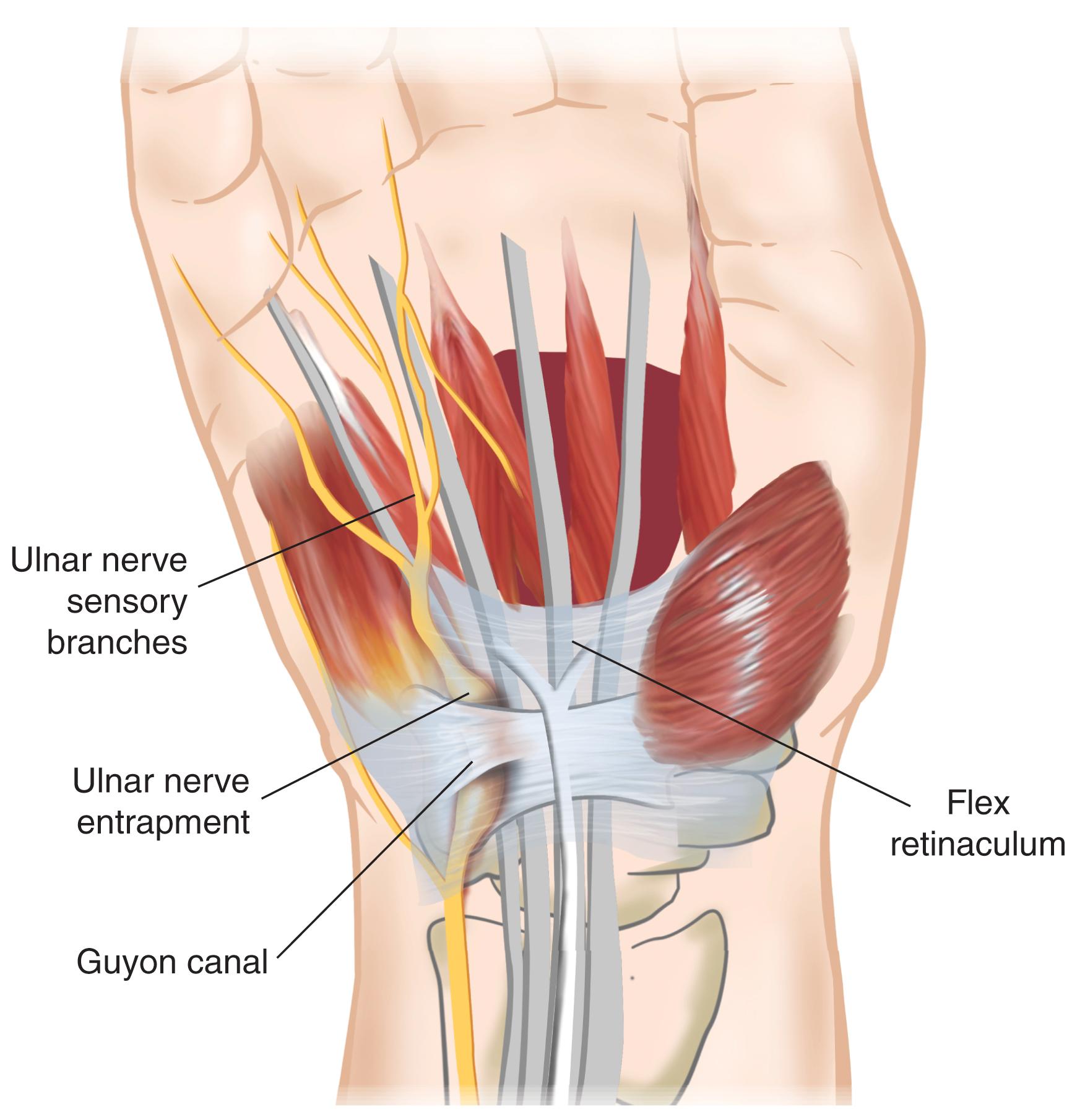
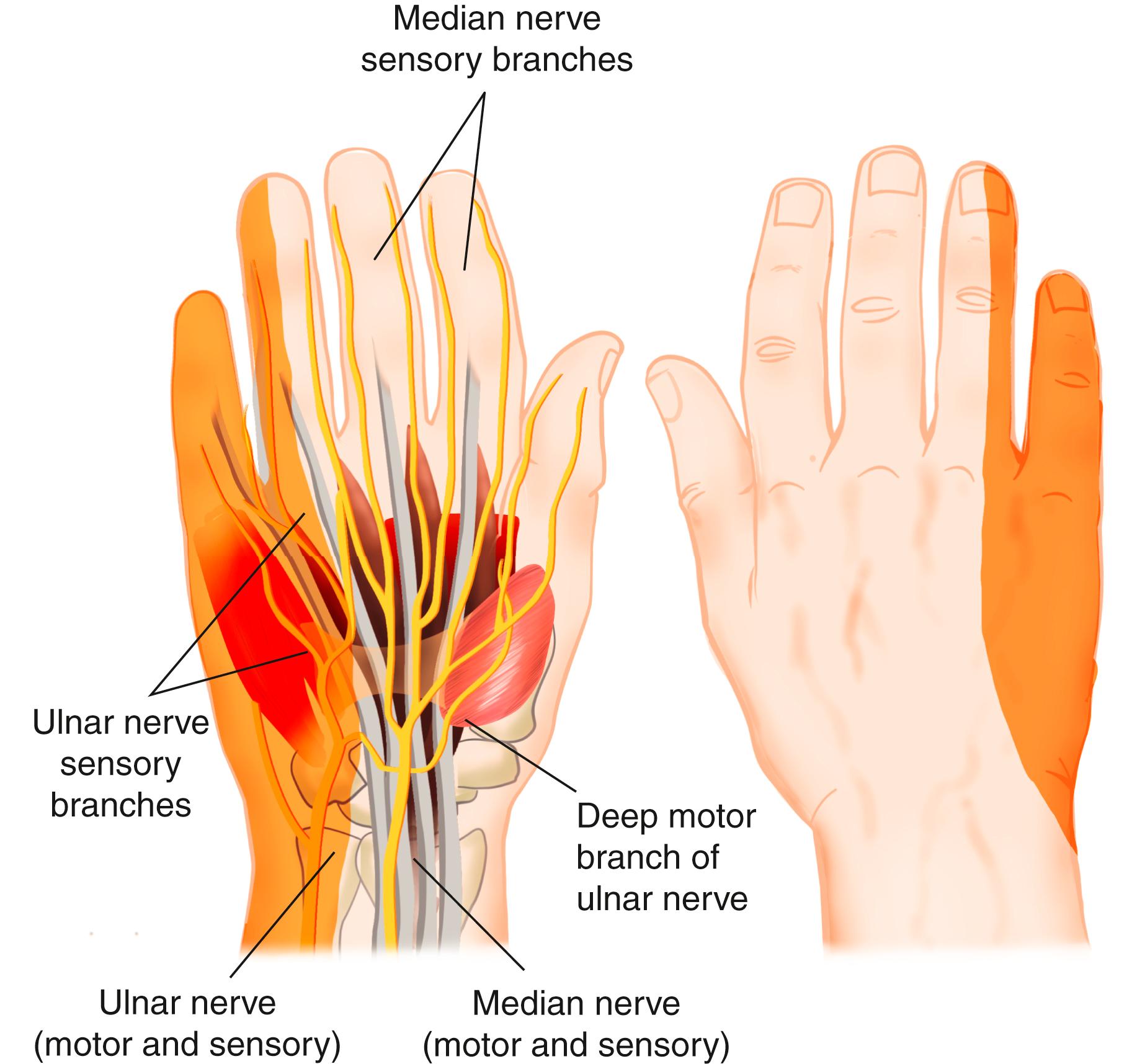
Physical findings associated with entrapment or trauma of the ulnar nerve at the wrist include a positive Tinel sign over the ulnar nerve at the site of injury. Decreased sensation in the distribution of the ulnar nerve of the palm and dorsum of the hand and the little finger and the ulnar half of the ring finger is common. A positive spread sign test is highly suggestive of the diagnosis of ulnar tunnel syndrome ( Fig. 94.3 ). The spread sign test is performed by having the patient relax the hand on the examination table and then spread his or her fingers as far apart as possible. The sign is considered positive if the patient is unable to spread 2 or more fingers apart. As the entrapment neuropathy progresses, wasting of the interosseous muscles may occur ( Fig. 94.4 ). The little finger is often spared. A failure to treat ulnar tunnel syndrome can result in permanent functional disability and a characteristic claw hand deformity ( Fig. 94.5 ).
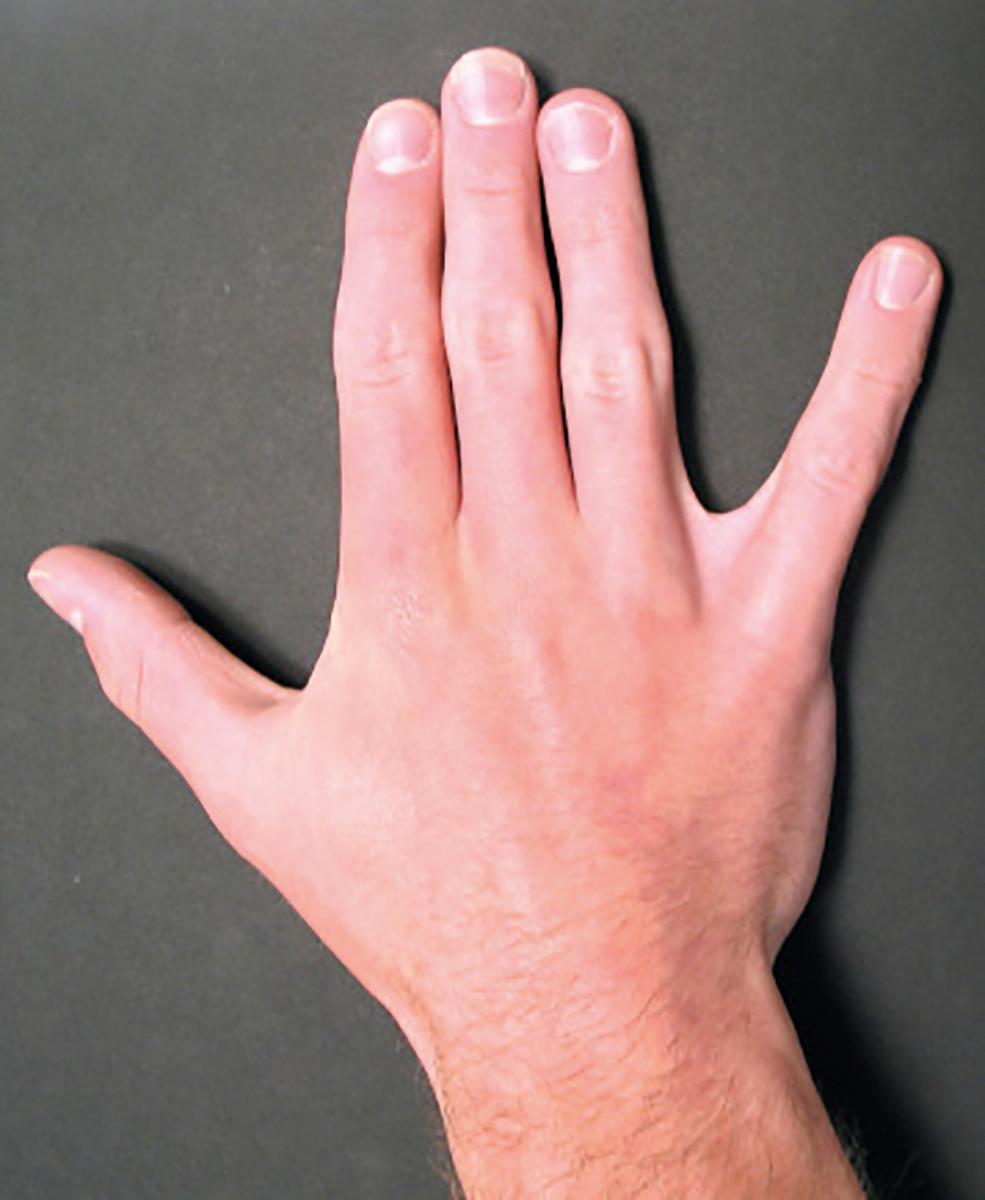
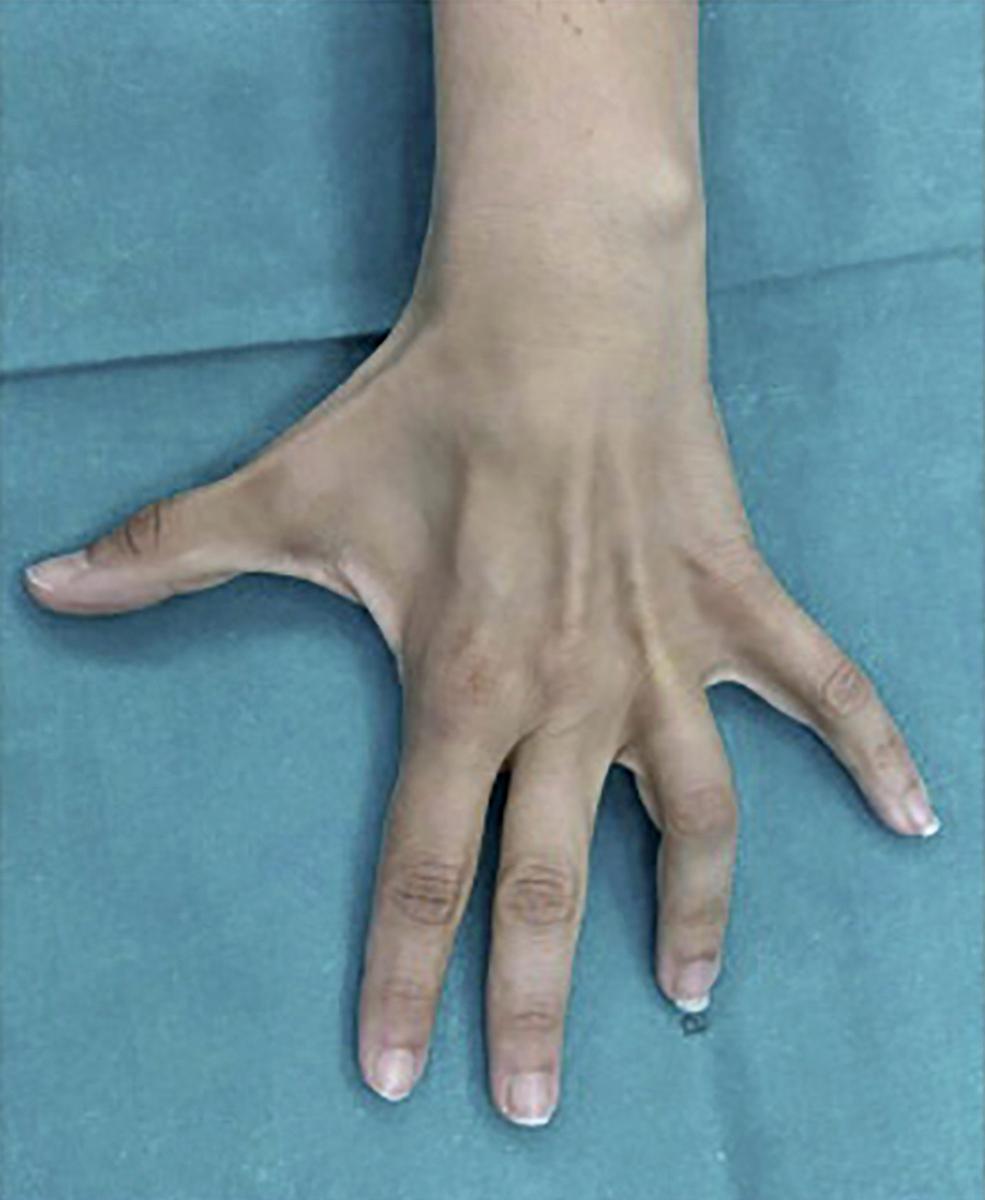
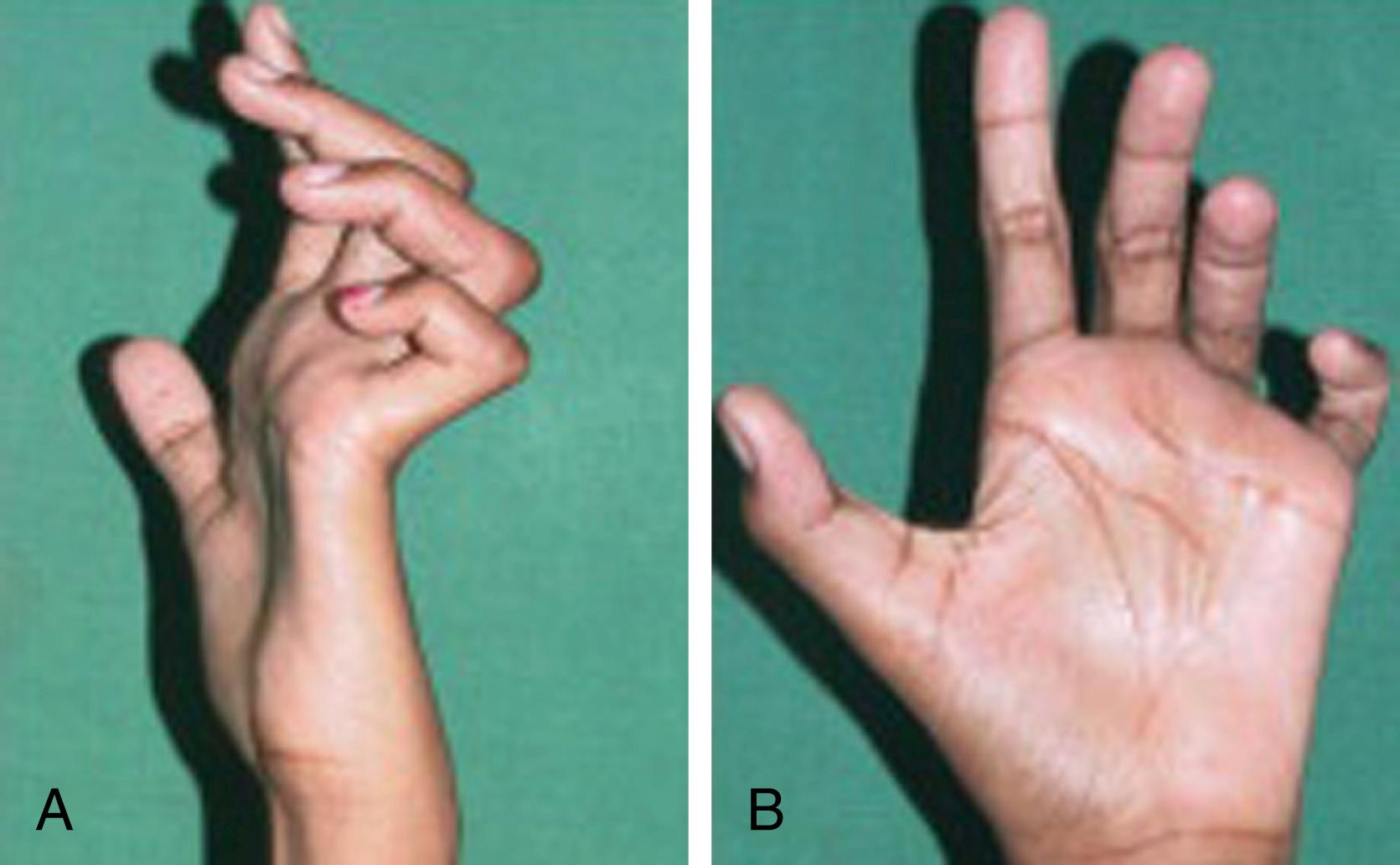
The ulnar artery is also susceptible to injury from penetrating, blunt, and surgical trauma as it passes through the Guyon canal ( Fig. 94.6 ). The artery is often injured when the patient hammers on the lid of a paint can or hubcap with the hypothenar eminence. Because the ulnar artery is protected by only skin, subcutaneous tissue, the superficial aponeurosis, and the tiny palmaris brevis muscle, the lid or hubcap depicted in Fig. 94.7 acts as a “hammer,” smashing the superficial palmar branch of the ulnar artery against the hook of the hamate bone that serves as the “anvil.” The result is a clinical syndrome known as the hypothenar hammer hamate syndrome, which is caused by vascular insufficiency of the superficial palmar branch of the ulnar artery from either aneurysm formation with emboli seeding distally or complete thrombosis of the artery ( Fig. 94.8 ). Color Doppler will help delineate abnormalities of the ulnar artery at the wrist ( Fig. 94.9 ). The patient with hypothenar hammer hamate syndrome will usually give a history of using the hypothenar eminence as a hammer or the use of jackhammers or vibrating tools. The syndrome is also seen in long-distance bikers and baseball catchers. It occurs primarily in men with a peak incidence in the fourth and fifth decades of life. The patient will complain of claudication-like symptoms when using the palmaris brevis muscle to grip or cup the palm and pain over the hypothenar eminence and ring and little finger. Physical examination will reveal ischemic skin changes over the hypothenar eminence and ring and little finger with skin mottling, cyanosis, blanching, fingertip ulcerations, and rarely frank gangrene. Pain on palpation of the hypothenar eminence is common and if there is trauma to the superficial palmar branch of the ulnar artery resulting in aneurysm formation, a pulsatile mass may be palpable. If repeated hammering with the hypothenar eminence has occurred, callus formation over the hypothenar eminence may be present. The Allen test will be positive if thrombosis and complete occlusion of the artery have occurred and negative if aneurysm formation is the source of the patient’s ischemic symptoms. Color Doppler can usually provide an accurate diagnosis of hammer hamate syndrome and determine if the pathology responsible for the patient’s symptomatology is from aneurysm formation of thrombosis of the superficial palmar branch of the ulnar artery (see Fig. 94.9 ).
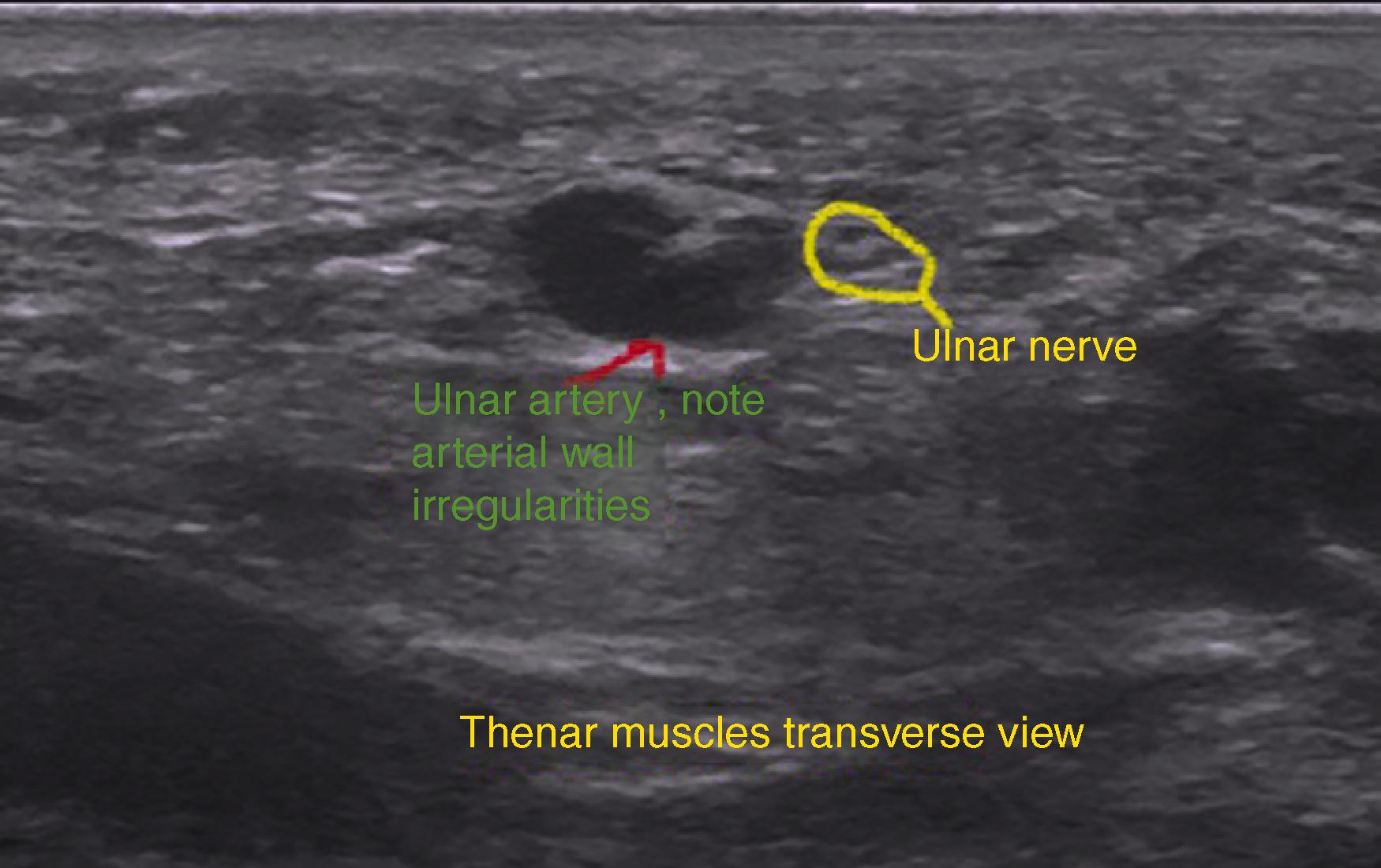
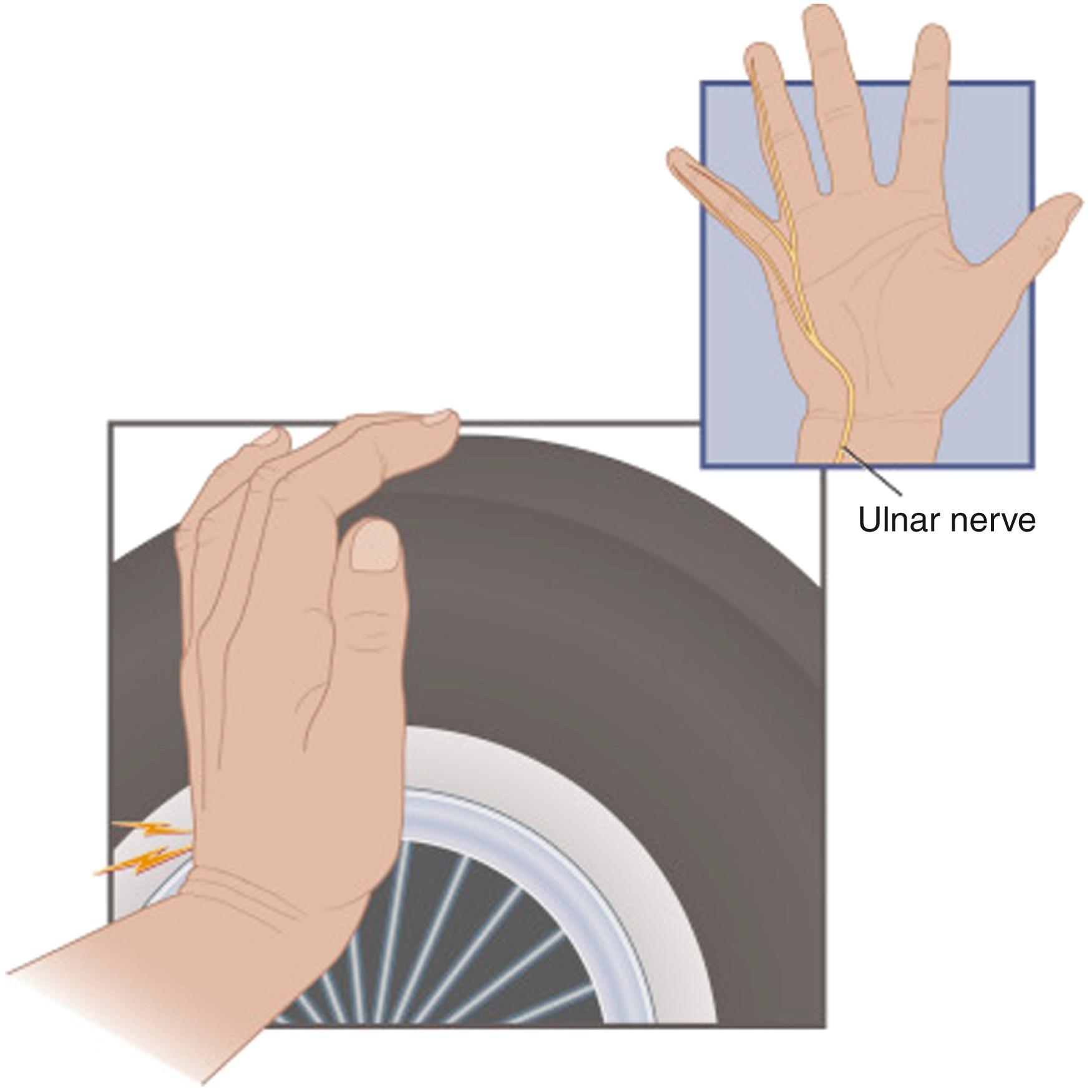
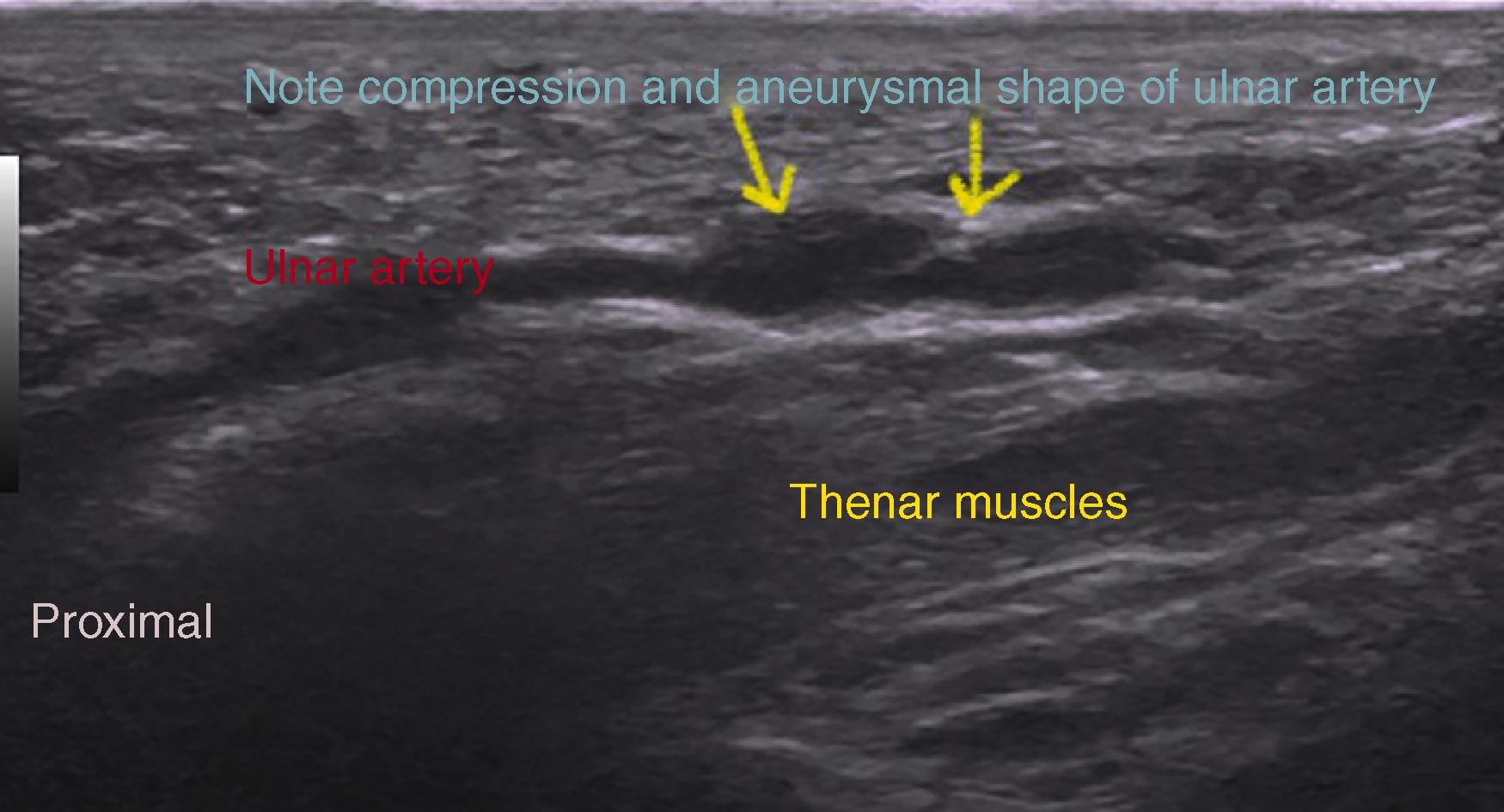
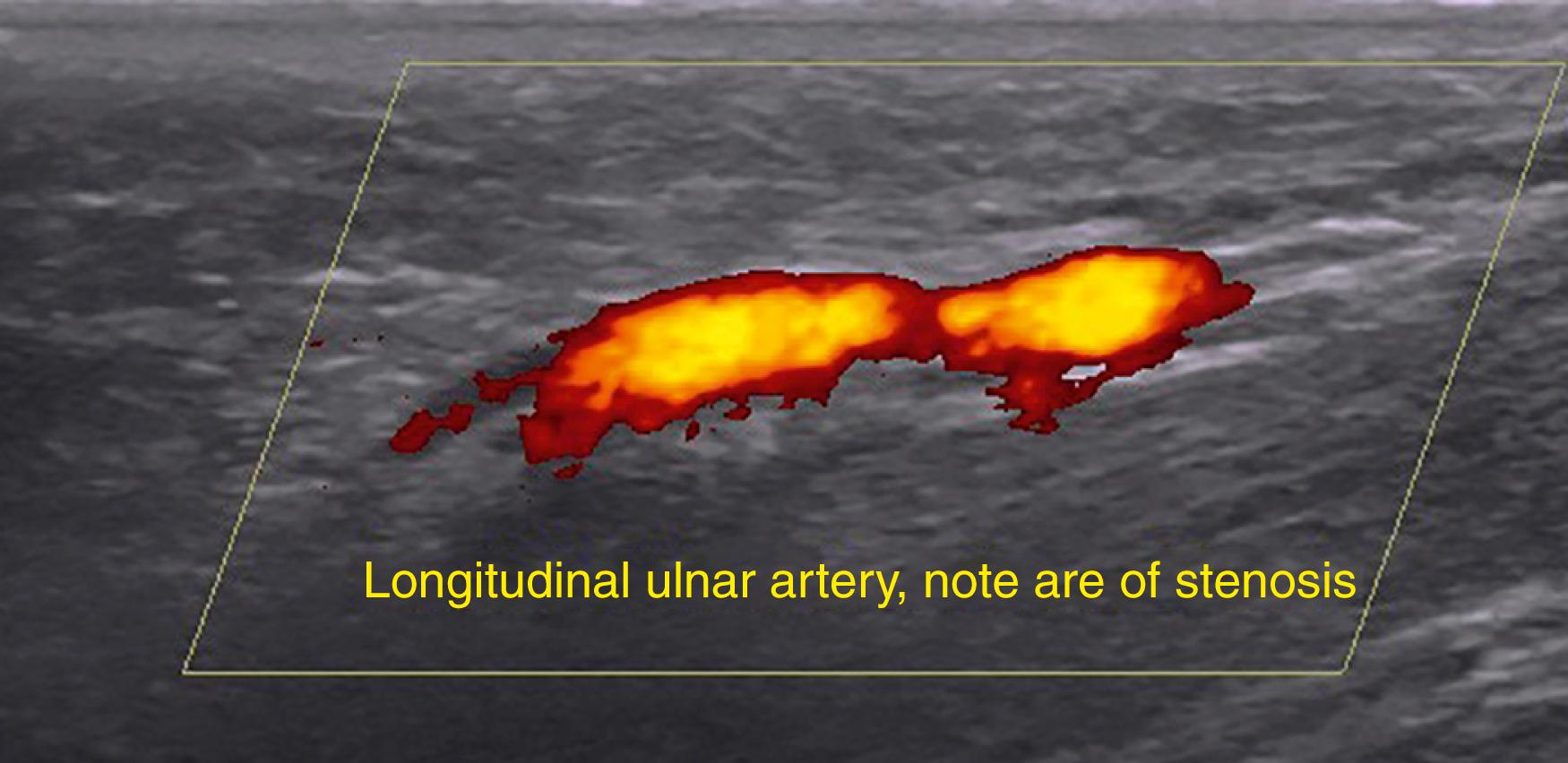
Ulnar tunnel syndrome is often misdiagnosed as arthritis of the carpometacarpal joints, cervical radiculopathy, or diabetic polyneuropathy. Patients with arthritis of the carpometacarpal joint usually have radiographic evidence and physical findings suggestive of arthritis. Most patients with cervical radiculopathy have reflex, motor, and sensory changes associated with neck pain, whereas patients with ulnar tunnel syndrome have no reflex changes and motor and sensory changes are limited to the distal ulnar nerve. Diabetic polyneuropathy generally manifests as symmetric sensory deficit involving the entire hand rather than limited just to the distribution of the ulnar nerve. Cervical radiculopathy and ulnar nerve entrapment may coexist as the so-called double crush syndrome. Furthermore, because ulnar tunnel syndrome is commonly seen in patients with diabetes, it is not surprising that diabetic polyneuropathy is usually present in diabetic patients with ulnar tunnel syndrome. Pancoast tumor invading the medial cord of the brachial plexus also may mimic an isolated ulnar nerve entrapment and should be ruled out by apical lordotic chest radiography.
Electromyography helps distinguish cervical radiculopathy, diabetic polyneuropathy, and Pancoast tumor from ulnar tunnel syndrome. Plain radiographs are indicated for all patients with ulnar tunnel syndrome to rule out occult bony disease. On the basis of the patient’s clinical presentation, additional testing may be indicated, including complete blood cell count, uric acid, sedimentation rate, and antinuclear antibody testing. Magnetic resonance imaging or ultrasound imaging of the wrist is indicated if joint instability or a space-occupying lesion is suspected ( Fig. 94.10 ). The injection technique described later serves as both a diagnostic and a therapeutic maneuver.
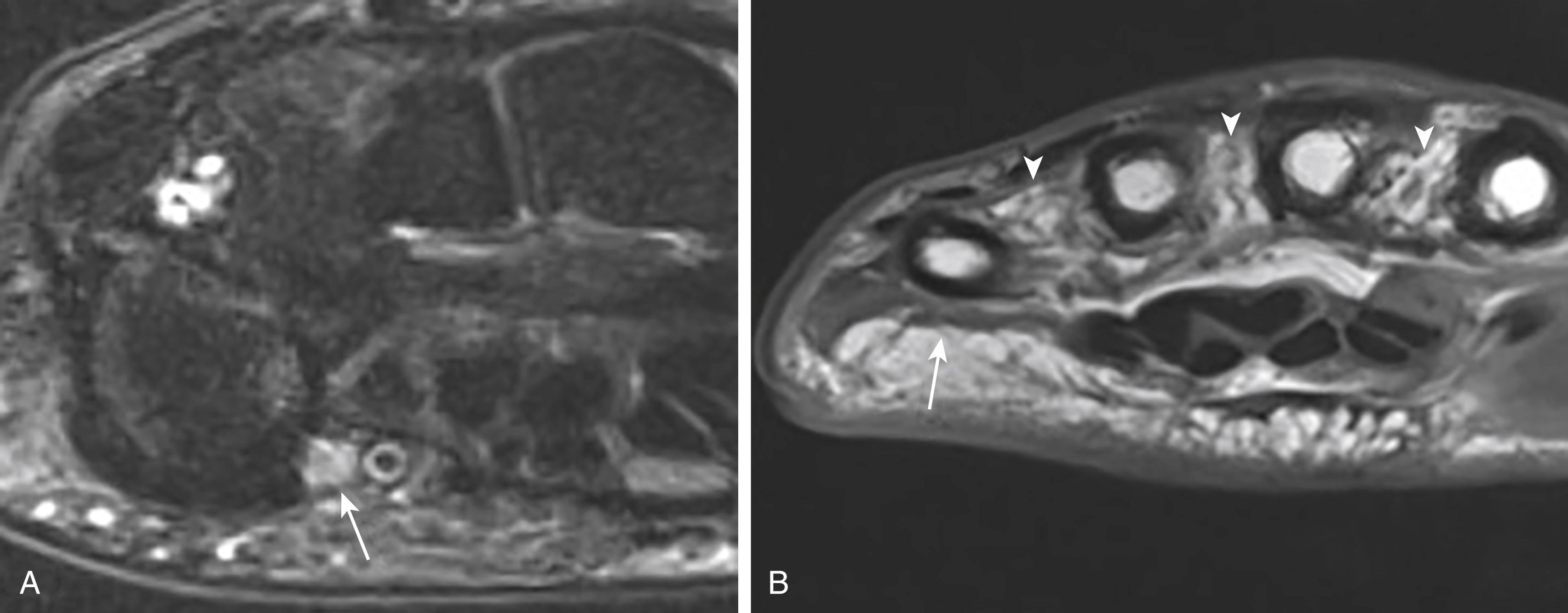
Arising from fibers from the C8-T1 nerve roots of the medial cord of the brachial plexus, the ulnar nerve lies anterior and inferior to the axillary artery in the 3 o’clock to 6 o’clock quadrant as it passes through the axilla. As the ulnar nerve exits the axilla, it passes inferiorly adjacent to the brachial artery ( Fig. 94.11 ). At the middle of the upper arm, the ulnar nerve turns medially to pass between the olecranon process and medial epicondyle of the humerus (see Fig. 94.11 ). Continuing its downward path, the ulnar nerve passes between the heads of the flexor carpi ulnaris moving radially along with the ulnar artery. At a point approximately 1 inch proximal to the crease of the wrist, the ulnar nerve divides into the dorsal and palmar branches. The dorsal branch provides sensation to the ulnar aspect of the dorsum of the hand and the dorsal aspect of the little finger and the ulnar half of the ring finger (see Figs. 94.1 and 94.2 ). The palmar branch provides sensory innervation to the ulnar aspect of the palm of the hand and the palmar aspect of the little finger and the ulnar half of the ring finger.
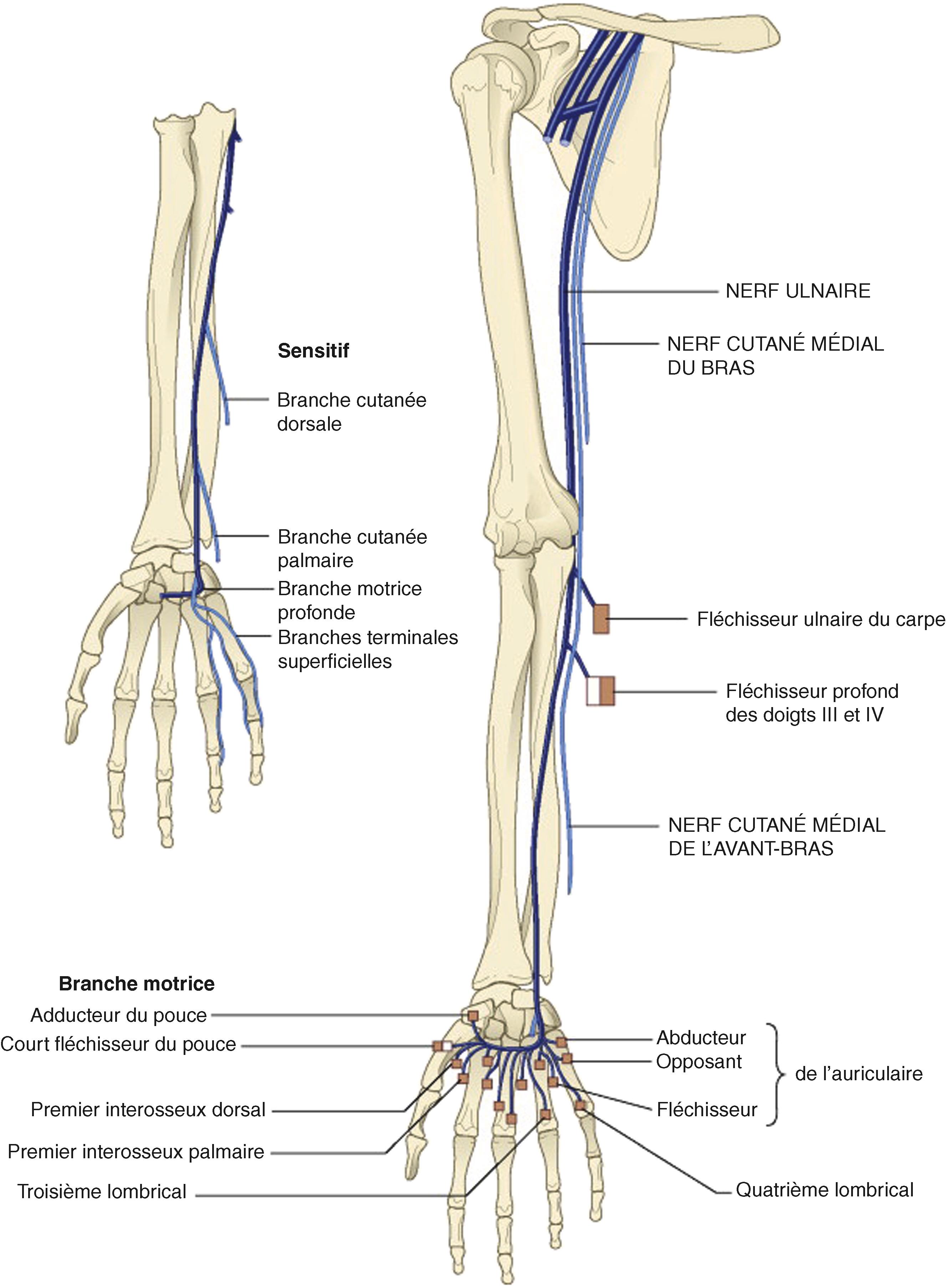
Like the carpal tunnel, the ulnar tunnel is a closed space and is bounded on 1 side by the pisiform and on the other side by the hook of the hamate The ulnar nerve must pass between the transverse carpal ligament and the volar carpal ligament (see Fig. 94.1 ). In addition to the ulnar nerve, the ulnar tunnel contains the ulnar artery, which may compress the nerve. Unlike the carpal tunnel, the ulnar tunnel does not contain flexor tendon sheaths.
Become a Clinical Tree membership for Full access and enjoy Unlimited articles
If you are a member. Log in here